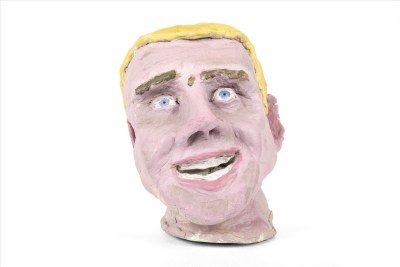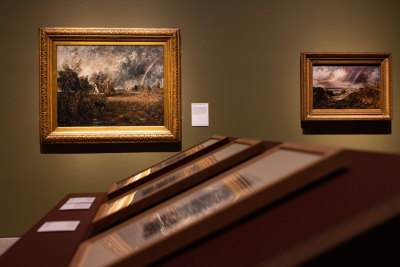Artist of the month: July 2016
Artist of the month: July 2016
Dominic Serres, the Elder RA
By The RA Collections Team
Published 1 July 2016
A French-born painter famed for his detailed naval scenes, the artist had an adventurous early life, before returning to England in the 1750s to embark upon a successful artistic career and become a founding member of the Royal Academy in 1768.
-
Dominic Serres was the only marine painter to be included among the Founder Members of the Royal Academy of Arts. He was born in Gascony, France and was well educated in a Benedictine school at Douai. However, despite his parents’ wishes for him to join the church, he ran away and enlisted with a vessel bound for South America. He ended up in Havana, Cuba, where he was taken prisoner by a British frigate and was brought to England in the 1750s. After being released he settled in England, and on moving to London met the marine artist Charles Brooking who encouraged him in his painting career. Serres seemed to quickly establish a flourishing practice as a painter of ship portraits and naval engagements and he was a frequent exhibitor at the newly formed Royal Academy showing 105 pictures there. He also became Librarian to the Academy in 1792 and was appointed Marine Painter to the King in 1791.
By the middle of the 18th century contemporaries noted the immense popularity of marine painting and attributed this to the importance of the navy to Great Britain. Many naval officers commissioned pictures recording their glorious engagements and they expected a high degree of accuracy.
Serres’s highly finished pictures, such as Gibraltar relieved by Sir George Rodney, January 1780 (below), were very well received. Critics found that the subjects were so well depicted that “we even fancy ourselves anchored on the spot”. This picture celebrates the victorious outcome of Sir George Rodney’s engagement off Cape St. Vincent with the Spanish squadron which had been blockading Gibraltar. The battle had continued after nightfall, and despite a terrible storm, resulted in the British fleet’s capture or destruction of all but two of the Spanish ships. Serres shows the fleet at anchor off Gibraltar after the event. The rigging is meticulously detailed and the ship’s names, the Prince George, Royal George and Sandwich are clearly spelled out. Serres possibly thought that this was an appropriate picture to present to the Academy as Prince William, later William IV, served during this naval battle on the Prince George.
-

Dominic Serres, the Elder RA, English Frigates in the Channel, 1789.

Dominic Serres, the Elder RA, Gibraltar relieved by Sir George Rodney, 1780-1782.

Dominic Serres, the Elder RA, English Frigates in the Channel, ca. 1790.

George Dance RA, Portrait of Dominic Serres RA, 11 March 1793.
-
The drawings (above) show English frigates in the Channel and are typical of the small drawings and watercolours produced by Serres in his later years. In spite of his own nationality, such images were calculated to appeal to the nationalistic sentiments stirred up in Britain by the prospect of hostilities with revolutionary France. The sale of Serres’s estate suggests that such drawings sold for about £1 a pair during his life (Christie’s, 13 March 1794). Serres collected drawings by the Dutch painter Willem van de Velde which he used in developing his compositions. He was also an accomplished draughtsman in his own right and an authority on different types of shipping vessels. After his death his son, John Thomas Serres, who was also an artist, published Liber Nauticus and Instructor in the Art of Marine Drawing in 1805.
The portrait of Serres (above) was drawn in March 1793, only eight months before his death. Dance was an architect but made it his hobby to draw profile portraits of friends and well-known personalities, describing it as “a great relaxation from the severer studies and more laborious employment of my professional life”. Dance drew Serres as part of a project to record the profiles of his fellow Royal Academicians, possibly to commemorate the 25th anniversary of the Academy’s foundation.
The object of the month for July 2016 is Henry Tuke’s July Sun Read more from the RA Collection.







